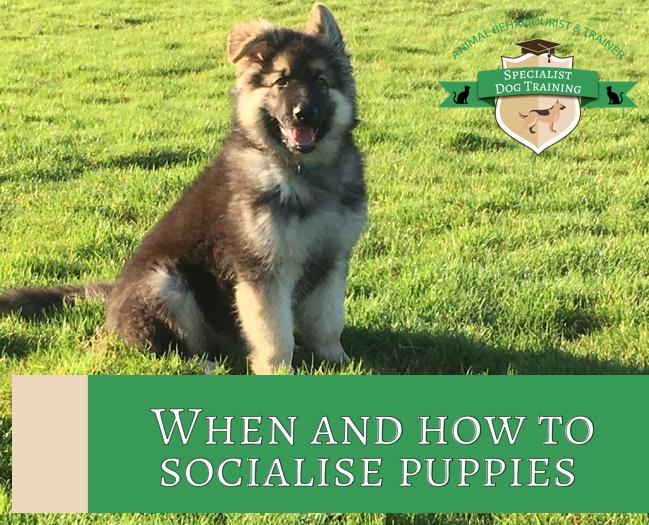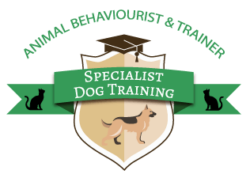
What is socialising? For most of us, and you’re not wrong if you are thinking the following, it’s introducing puppies to dogs so that they learn how to interact with other puppies/dogs. This is just one facet of socialising, not all of it as it encompasses so much more. For those owners who think that you have a small window of opportunity to carry this out, and if you miss “the important age”, you miss the opportunity altogether, read on!
I have, and continue to do so, receive several phone calls and enquiries regarding puppy socialisation classes, or whether they could join a walk to help socialise their puppy with the other dogs. As you can see, owners have very mixed views on what, when, where, and how to socialise puppies.
So, let me help break the mould here and give some firm advice about socialisation, why it is important, when to socialise and how to socialise your puppy so that he/she will develop into a well-mannered adult dog (and the most popular / socialised dog around town).
Rule 1: Socialisation is for life!
Yes, that’s right, it is for life. We need to continually and positively expose our dogs to situations that they need / should come across daily. It’s not just about giving the puppy the opportunity of experiencing that situation or event once and then expecting the puppy to remember how to behave in that situation.
Rule 2: Socialisation is not just taking your puppy to a class to play with other puppies.
Socialisation is teaching your puppy how to behave around all ages of dogs, not just puppies. Most adult dogs will tolerate puppies at a young age, but when this behaviour is continued through into puberty, it becomes rude. That’s why, as owners, we not only need to teach the puppy how to interact with all ages of dogs but good old fashioned manors so that they know when and when not to interact with other dogs (especially if the owner of said doesn’t want your puppy to interact). For example, we shouldn’t allow our puppy to go up to another dog who is on lead or if the owner asks us to keep our puppy away from their dog – they are not being unreasonable or rude, they are asking for a reason (which may not be overtly obvious to us as we don’t know their dog).
Rule 3: Socialisation includes many different situations that will be a daily routine for your puppy.
Walking in traffic, walking in the countryside around livestock, travelling on public transport or travelling in the car, all these situations and many more need to be part of teaching your puppy how to behave. Regular visits to the vets (not just when the puppy needs a vaccination or booster), visiting family or friends, going out for lunch in a dog-friendly venue can be great for teaching puppies how to be calm and that people are friendly. It also teaches puppies how to ignore people – remember that everyone loves a puppy, but a year or so on, people forget and expect the same puppy to have manners.
Rule 4: Socialisation means training.
Every dog can be trained, and every puppy needs training, get it right from the start and you have the foundation to build from. Remember that puppy training is very different from adolescent dog training and different from adult dog training. All training should be positive, and you should always look to develop their training so that it includes life skills and manners. Therefore, training classes should include all ages of dogs. Why? Because your puppy should get used to training, walking and calmly interacting with all ages and breeds of dogs. Training should not just be in a class environment, this training should be carried out in varying environments which all results in socialisation too.
Rule 5: Socialisation means making sure you are understanding your puppy’s body language and communication with people and other dogs and its environment.
Paying attention to your puppy’s body language will help you understand if he/she is becoming anxious in the situation or whether they are relaxed. You need to make sure that the situation he/she is experiencing is not overwhelming so that they are comfortable and not more concerned about the situation each and every time you expose your puppy to it. If you know your puppy is anxious, you can move away and slowly re-introduce the situation at a later stage, it is all about managing your puppy’s environment which is part of careful socialisation – get this right and you are helping your puppy become confident.
Rule 6: Socialisation inside the home.
What!? Yes, inside the home! We have several aspects of our daily lives that we rely on, from vacuum hoovers to washing machines, and then there is brushing your puppy, handling (checking your puppy’s ears, eyes, mouth, paws, etc) and not forgetting brushing your puppy’s teeth or at least getting him or her ready for this when they are older! The more you slowly introduce these aspects now, the better they will accept this at a later stage in life.
Rule 7: Socialisation means noises too.
We are all aware of firework season and with a new puppy who hasn’t experienced these sounds, it can be a frightening experience. To assist with this, you can order my sounds CD, created to tackle these very issues and to help your puppy get used to various sounds, from fireworks to children and babies (remember that sometimes our puppies are brought into homes, where a year later, a new addition to the family arrives too). Getting them ready early helps them adjust.
Rule 8: Socialisation is not everything quickly or nothing.
Socialisation should be carried out slowly to help your puppy adjust to its new environment. The wider range of experiences that you can expose your puppy to, the better chance you have of him or her being comfortable in a wider range of situations when they are an adult dog. While it is impossible to expose your puppy to everything that he or she will encounter in their lifetime, the more you cover the better chance your puppy will have to experience and get used to it.
Rule 9: Make it fun to socialise.
Using something your puppy loves and associating this with the experience helps to make positive connections. Treats, toys and games are just some of the positive rewards you can use to help your puppy.
Rule 10: Socialisation can start early before your puppy’s final vaccination.
How?! Well, you can teach your puppy that going in the car is a good and fun thing to do, drive to shopping centre car parks, different neighbourhoods, car washes, country lanes, etc. If he or she is small enough, carry your puppy around your town, village or even just up and down your road/garden. If the vet is in agreement, arrange some play sessions with family dogs or visits to the groomers or veterinary surgeries for meet and greets.
Our final comment:
Socialisation is vital for helping your puppy’s development into adulthood and becoming a happy, fun and safe family member. A dog who is relaxed with strangers, able to travel anywhere, allowed to visit family and friends and go on holiday with you is a companion that can adapt to new experiences. Although there may be some dogs who are genetic predisposition to make socialisation difficult, the majority can learn and adapt. Socialising your puppy gives him or her the greatest chance to develop into the dog who is comfortable with his or her environment and a joy to be around.
